Text
Introduction
How do we determine whether an act contributes to our integrity, and has anyone else the right to determine it for us; if so, to what degree, and in what respects?
— Carol Riddell, from Divided Sisterhood a Critical Review of Janice Raymond's the Trans-Sexual Empire
In today’s context, identity is a crucial signifier for not only a person’s individuality but also their positioning within society. Identity markers such as transgender, wheelchair user, adolescent, indigenous, sex worker, and so on categorize people in relation to societal standards. These categories place people into rigid boxes which operate under the assumption that everyone in each respective box shares a common identity. The expectation of a shared experience allows for strict policing if anyone were to act contrary to the normalized characteristics for their identity. Appropriate traits for each identity marker are crafted by the continual perpetuation of societal standards until those traits are considered to be synonymous with that identity. Separation from restrictive identity markers is improbable due to society’s tendency to label people through biased perceptions; therefore, a person’s ability to define their own identity is severely hindered.
The practice of placing labels onto everyone in order to mark their class, gender, sexuality, ability, age, ethnicity, et cetera creates a system of oppression. Anyone who does not uphold the ideal model for their predetermined identity markers are policed by their supposed peers as well as outsiders within society, essentially anyone who is aware of the appropriate, normalized traits. Societally-determined identities do not encourage individuality, rather those identifiers restrict people by expecting them to conform to labels placed on them at birth.
A seemingly simple solution to this form of oppression would be to dismantle the labeling system in favor of granting everyone into a general “human” identity. However, this category does not afford for the diversity of humankind to truly be expressed in addition to the maintenance of a supposed shared experience. Instead of sustaining the belief in sameness, society should operate under the notion of diversity.
This Manifesta aims to encourage people, who feel as though the identity markers that society has placed on them do not align with how they perceive themselves, to resist and dismantle the normalization of restrictive identifiers. Everyone should be permitted to craft their own identify without the impediment of societal policing. Everyone should be granted the ability to express themselves in ways that bring them happiness. Everyone should be allowed to determine which identity markers they wish to utilize. No one should be able to determine the identity markers for another person:
BECAUSE an individual’s identity is influenced by intersectional factors
BECAUSE an individual’s identity performance is impacted by policing
BECAUSE an individual’s identity should not be restricted to socially determined categories
#Socialization#Self-Determination#Identity#Intersectionality#Social Location#Joan W. Scott#Carol Riddell
0 notes
Text
1. BECAUSE an individual’s identity is influenced by intersectional factors

Dobson, Miriam. “Intersectionality: a Fun Guide.” Beyond These Mountains, 28 Aug. 2016, miriamdobson.com/2013/07/12/intersectionality-a-fun-guide-now-in-powerpoint-presentation-formation/.
The assumption that there is a universal human experience disregards the multitude of diverse identities influenced by intersectional factors. With the oppressive categorization system, individuals who share an identity marker are expected to have an identical connection to the identifier, regardless of the other factors that may have influenced their placement within the identity category. This assumption proposes a “homogenous notion” of identity categories; as a result, an image of an average and shared representation of each identity marker is created. However, the reality of complex differences amongst each individual within a given identity category is ignored.
In addition to the assumption of a universal human experience, individuals are placed into categories based on society’s dualistic structuring of identity. Individuals are either able or handicapped, religious or secular, heterosexual or homosexual, normal or other. This dualistic structure of identity ignores the ability for individuals to inhabit multiple identity categories simultaneously. Given this ability, an individual’s identity cannot be reduced to a simplistic system based on either/or categorizations, especially when an individual’s identity can be constructed by several, potentially contradictory, identity markers.
Therefore, when discussing the construction of identity, the influence of intersectional factors must be considered. Identities are constructed through the “intersection of multiple dimensions,” which grants individuals the possibility to possess unique relationships to their identity markers.
Rather than continuing the façade of a universal human experience, individuals should create coalitions within their chosen identity categories. Instead of ignoring differences or using them as reasons for separation, those differences should be embraced. By embracing the differences that make each individual unique, the assumption of a shared experience would be dismantled in favor of a more intersectional understanding of identity.
Introduction and Sentiments
#Intersectionality#Identity#Universal Experience#Individuality#Unique#Chandra Talpade Mohanty#Gloria Anzaldúa#Kimberlé Chrenshaw#Audre Lorde
0 notes
Photo
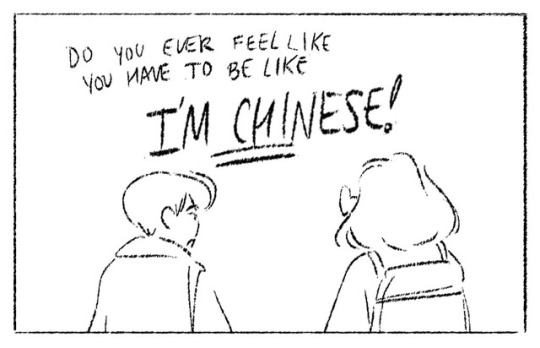

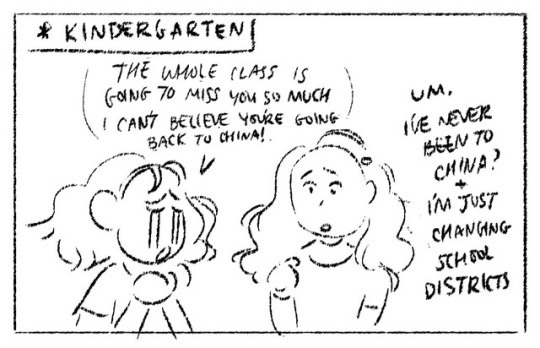
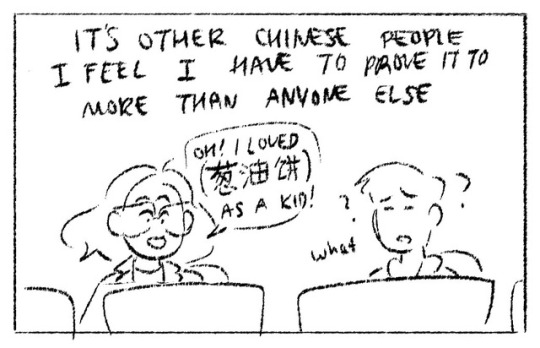
a constant dilemma. it feels like I have to prove that I’m something and at the same time have my identity decided for me.
535 notes
·
View notes
Text
2. BECAUSE an individual’s identity performance is impacted by policing
Lesbian is the word, the label, the condition that holds women in line. When a woman hears this word tossed her way, she knows she is stepping out of line. She knows that she has crossed the terrible boundary of her sex role. She recoils, she protests, she reshapes her actions to gain approval.
— Radicalesbians from The Woman-Identified Woman
Labels are treated as concrete definitions for everyone’s identity, thus the potential for fluidity within a given identity category is invalidated. Society has constructed the belief that each identity marker is defined by an assortment of innate qualities. Individuals are expected to adhere to the innate qualities of their respective identity markers. Failure to comply with the appropriate traits would result in an individual being deemed inferior or criticized for not being a “true” representation of their ascribed identity marker.
Similar to the belief that identity markers possess innate qualities, society believes individuals are born with a collection intrinsic identity markers. Influenced by others, such as their caregivers, individuals are indoctrinated to uphold the socially determined categories that were placed upon them at conception. The proper aspects of the predetermined identity markers are enforced, and individuals are policed if they perform their identity in an improper fashion.
As a result of identity policing, individuals become focused on self-modification in order to uphold the innate qualities of their given identity markers. The constant pressure to alter one’s identity performance leads to the feeling of being insufficient because the individual loses control over their own body while trying to satisfy the societal ideals.
Rather than expecting individuals to conform to socially-determined definitions for identity markers that were placed upon them at birth, individuals should be allowed to express their unique identity in a manner that guarantees their happiness. Instead of enforcing predetermined identity markers, individuals should be encouraged to craft their own identity with a compilation of labels that best suit their perception of their identity. Self-definition rather than self-modification would foster a new belief that fluidity amongst identity categories is possible.
Introduction and Sentiments
#Radicalesbians#Social Location#Identity Performance#Linda Alcoff#Simone de Beauvoir#Susan Bordo#Self-Definition
0 notes
Photo
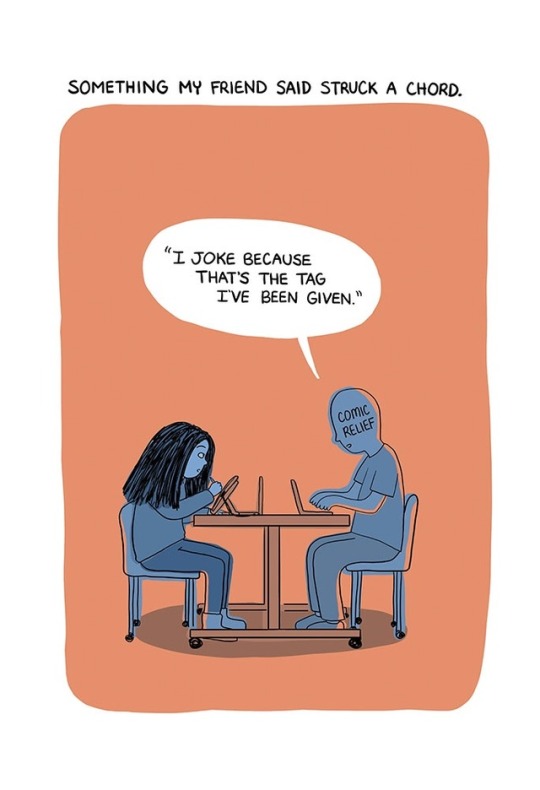
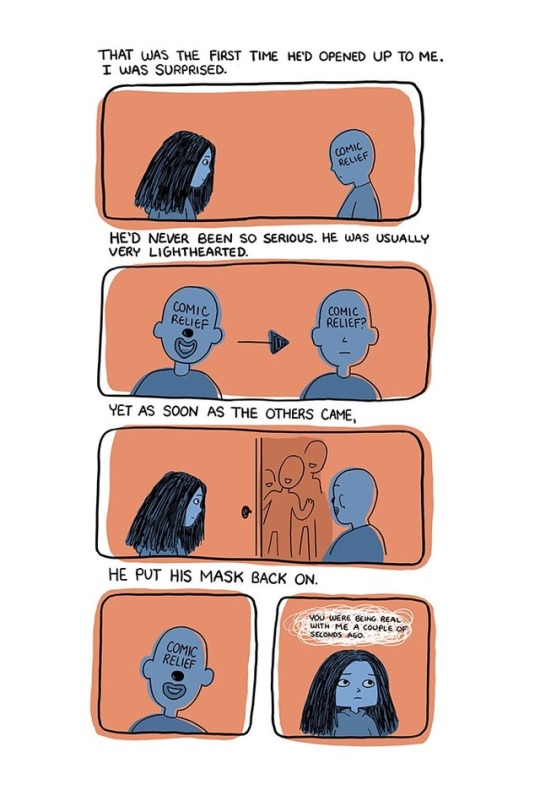


Questioning labels and identity. 🦋😶
848 notes
·
View notes
Text
3. BECAUSE an individual’s identity should not be restricted to socially determined categories

Socially constructed identity markers inhibit an individual’s ability to express their distinct character. Individuals are restricted by the rigid confines of their predetermined identity categories; thus, individuals are not granted the ability to transcend the boundaries of the constructed definitions of their given identity markers.
With the oppressive societal categorization system, particular identity markers are ascribed negative attributes, and individuals who are labeled with those identity markers are expected to be representatives of those unfavorable qualities. Being labeled a girl is equivalent to being “dumb,” being labeled as lower class is equivalent to being “fiscally irresponsible,” or being labeled elderly is equivalent to being “weak.” The conflation of negative attributes with identity markers limits the potential for an individual to craft their own identity.
Society should recognize that an individual’s identity is shaped by their own interpretation and reconstruction of their personal history. Personal experiences and societal constructs influence an individual’s perception of themself, and those influences enable individuals to actively reconstruct their identities.
Rather than expecting individuals to operate within rigid definitions of predetermined identity categories, society should enable individuals to craft their own identity. Instead society defining everyone’s identity, individuals should be able to choose their own identity markers based on how they define themselves. By allowing individuals to craft their own identities, fluidity amongst identity categories can become a conceivable reality, and subsequently, identity possibilities beyond the dualistic categorization structure can be achieved.
Introduction and Sentiments
0 notes
Photo
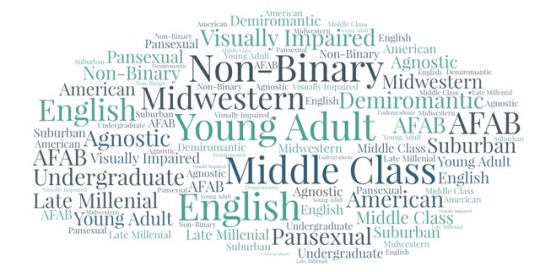
The Self-Identification Manifesta was inspired by my strong personal connection to the topic. The triad of sentiments illustrate my dissatisfaction with how society has constructed identity.
Given the assumption that a fixed identity is imposed on an individual at birth, people are not granted the ability to discover their own selves nor can they fathom the possibility to engage in activities that exist outside their predetermined acceptable tasks.
Identity markers are treated as a preexisting condition, even in cases where certain categories of identity are constantly changing. Alterations in an individual’s age category, ability, class status, sexuality, gender performance, and so forth are viewed to be congenital conditions that the individual was destined to uphold at some point in their lifetime. Outside influences are not taken into consideration when analyzing the construction of an individual’s identity.
As the sentiments suggested, identity is influenced by intersectional factors, social location, and restrictive categories. Contrary to the notion of a presumed fixed identity, an individual is able to undergo a fluid self-rediscovery of their identity. This self-rediscovery is greatly influenced by a changed social location or the analysis of the intersections that shape the individual’s perceptions. Therefore, an individual can consistently reimagine their identity as they begin to understand what has made them unique.
Uniqueness should not have to come with the consequence of existing within socially determined categories. Society praises its acceptance of self-expression, but self-expression is only afforded to individuals who perfectly uphold the expectations of their identity markers. Thus, individuals are confronted with the option to either blindly accept the social confines of their identity, be subjected to policing for operating outside the appropriate traits, or conceal the identity performance that affords happiness.
Personally, I experience the impact of policing as a result of my choice to conceal my identity. My position within a middle-class, conservative family does not enable an option to combat the identity markers that were placed on me since an over-confident doctor announced my supposed sex. Before I was able to craft my own perceptions of the world, society determined my sex, gender, and sexuality. After my birth, I was consistently confronted with an array of identity markers that others imposed onto me, which were rather displeasing and never truly coincided with how I envisioned myself. In pursuit of my “true identity,” I tested several identity markers that I believed would offer some enlightenment, but inevitably changed which ones I utilized as a result of the restrictive expectations for the previous identity marker. Eventually, I settled on identity markers that were not confined by rigid expectations, rather ones that encouraged variability.
I recognize that my connection to the Self-Identification Manifesta is limited to my gender and sexuality. For that reason, there are individuals who are affected by more than a minimal number of identity markers; ethnicity, ability, class-status, age, religious affiliation, and so much more affect an individual. I created Self-Identification Manifesta so that individuals who faced a variety of restrictions could become inspired to discover their “true identities.”
0 notes
Link
This pop anthem describes stories that are typically forgotten in the mainstream American feminist movement. Dorian Electra and their ensemble of powerful female voices unearth to those stories with the assertion that society should not control their bodies.
Trans rapper London Jade states:
Open up your mind, maybe you will understand
Trans doesn't focus on the parts up in my pants
So don't control my body with science
'Cause me and my girls will form an alliance
This verse emphasizes the presence of strict socially determined identity categories that individuals are expected to uphold. However, as London Jade suggests, identity markers, such as trans, are not restricted to a collection of socially accepted “innate qualities,” rather there is fluidity within each identity category that is chosen by the individual. In addition, London Jade declares that an alliance will be formed. Coalition building amongst individuals in their chosen identity categories, despite their potential differences, would expand the intersectional movement for self-identification and take away society’s control over individuals’ bodies.
Zuri Marley expands on the idea of coalition building when she signs:
Differences in our experience, are you listening?
Don't stay quiet when they erase our images
You blow yourself a kiss. Are you a “feminist?”
Hold me, hold me, hold me, but don't try to control me
The bridge calls attention to the erasure of particular stories within the American feminist movement. The movement’s ignores intersectional stories and as a result, promotes the assumption that a universal human experience exists. Intersectionality is exceedingly important to recognize when strengthening a movement so that all voices may gain the freedoms they deserve.
#Dorian Electra#Zuri Marley#K Rizz#Chynna#London Jade#Bodily Control#Intersectionality#Feminism#Self-Identification
0 notes
Link
“[M]oving away from a diagnostic system of legal gender recognition to one of self-declaration would fail some vulnerable youngsters, undermine women’s sex-based protections and harm trans people themselves”
The article argues that if the government recognizes self-identification as a viable form of declaring gender identity, several other identity-based groups would be undermined. Essentialist arguments are utilized to support the claim that sex/gender is decided biologically, and paternalistic attitudes are showcased when the contributors claim that the ability to self-identify would harm adolescents, who already experience enough trauma when accepting their societally determined identities.
The article perpetuates the assumption that individuals are ascribed certain identity markers upon birth, and therefore cannot decide their identity for themselves. Post-operative trans-individuals, who the article refers to as ‘transsexuals,’ are accepted due to their commitment to upholding the supposedly innate qualities of their gender identity, however other trans-individuals are criticized for their ability to declare their identity without undergoing procedures to alter their bodily appearances. Therefore, the article invalidates the individuals’ ability to define their own identities due to the assumption that they would not be ‘true’ representatives of the identity category.
This argument neglects to acknowledge that an individual’s identity is influenced by their own perception of their personal experiences, and therefore their identity cannot be decided by society. By upholding essentialist beliefs about what defines a ‘woman,’ the contributors invalidate an individual’s right to craft their own identity. As a consequence, the article rewards ‘women,’ who properly uphold the societal standards for their predetermined sex/gender markers, by arguing against self-identification in order to protect the ‘true’ representations of ‘women.’
Self-identification should be an undeniable right of every individual. ‘Improving trans lives,’ and the lives of other individuals who wish to choose their own identity markers, should not come with the expense of paternalism. Individuals do not need protection from themselves, rather they need a society that encourages actual freedom of expression.
0 notes
Video
“Showing Off Your Assets.” Say Yes to the Dress, Season 10, episode 3, 2013.
“I hate to spend additional money to alter the dress to myself, especially when you can alter yourself to the dress”
The bride’s commitment to altering herself to her wedding dress metaphorically represents the pressure individuals undergo when attempting to conform to socially determined identity markers.
Prior to her appearance on the show, the bride had a breast augmentation, hence the question regarding the fit in the breast area. Her dedication to wearing a bustier instead of tailoring the dress signifies an underlying feeling of inadequacy. In order to uphold the strict societal expectations that were placed onto her, the bride concerned herself with self-modification. Consequently, the bride, literally and figuratively, loses control over her body as she attempts to satisfy society’s requirements.
1 note
·
View note
Text
Resources
Alcoff, Linda. “Cultural Feminism versus Post-Structuralism: The Identity Crisis in Feminist Theory.” Feminist Theory: A Reader, 4th ed., McGraw-Hill Higher Education, 2013, pp. 376-386.
Referenced the innate qualities people are expected to adhere to or be criticized for not being a “true representation” in the Sentiment 2 post
Referenced identity shaped by interpretation and reconstruction of personal history in Sentiment 3 post
Anzaldúa, Gloria. “La Conciencia de la Mestiza: Towards a New Consciousness.” Feminist Theory: A Reader, 4th ed., McGraw-Hill Higher Education, 2013, pp. 370-376.
Referenced ability for an individual to inhabit multiple identity categories simultaneoulsy in the Sentiment 1 post
Beauvoir, Simone de. “The Second Sex.” Feminist Theory: A Reader, 4th ed., McGraw-Hill Higher Education, 2013, pp. 161-168.
Referenced the influence of others and indoctrination in the Sentiment 2 post
Bordo, Susan. “The Body and Reproduction of Femininity.” Feminist Theory: A Reader, 4th ed., McGraw-Hill Higher Education, 2013, pp. 460-466.
Referenced self-modification, feeling insufficient, and loss of control over own body in the Sentiment 2 post
Butler, Judith. “Gender Trouble: Feminism and the Subversion of Identity.” Feminist Theory: A Reader, 4th ed., McGraw-Hill Higher Education, 2013, pp. 436-444.
Influenced idea of possibilities beyond the dualistic categorization in Sentiment 3 post
Crenshaw, Kimberlé. “Intersectionality and Identity Politics: Learning from Violence Against Women of Color.” Feminist Theory: A Reader, 4th ed., McGraw-Hill Higher Education, 2013, pp. 484-492.
Referenced the construction of identities through the “intersection of multiple dimensions” in Sentiment 1 post
“Feminist Manifesto in Support of Sex Workers’ Rights.” Feminists for Sex Workers.
Influenced the Resources post with links to the referenced articles
Hanna, Kathleen. “Riot Grrrl Manifesto.” Bikini Kill Zine 2, 1991.
Influenced the repetition of BECAUSE at the beginning of each sentiment
Referenced girl = dumb and structure in Sentiment 3 post
Lorde, Audre. “The Master’s Tools Will Never Dismantle the Master’s House.” Feminist Theory: A Reader, 4th ed., McGraw-Hill Higher Education, 2013, pp. 15-17.
Referenced ignoring differences or using them as reasons for separation
Mohanty, Chandra Talpade. “Under Western Eyes: Feminist Scholarship and Colonial Discourses.” Feminist Theory: A Reader, 4th ed., McGraw-Hill Higher Education, 2013, pp. 327-335.
Referenced the “homogenous notion” in the Sentiment 1 post
Radicalesbians. “The Woman-Identified Woman.” Feminist Theory: A Reader, 4th ed., McGraw-Hill Higher Education, 2013, pp. 207-210.
Quotation utilized in the Sentiment 2 post
Riddell, Carol. Divided Sisterhood: A Critical Review of Janice Raymond’s The Transsexual Empire, Liverpool: News from Nowhere, 1980.
Quote utilized in the Introduction post.
Scott, Joan W. “Deconstructing Equality-Versus-Difference: or, the Uses of Poststructuralist Theory for Feminism.” Feminist Theory: A Reader, 4th ed., McGraw-Hill Higher Education, 2013, pp. 396–405.
Referenced the “general ‘human’ identity” in the Introduction post.
1 note
·
View note